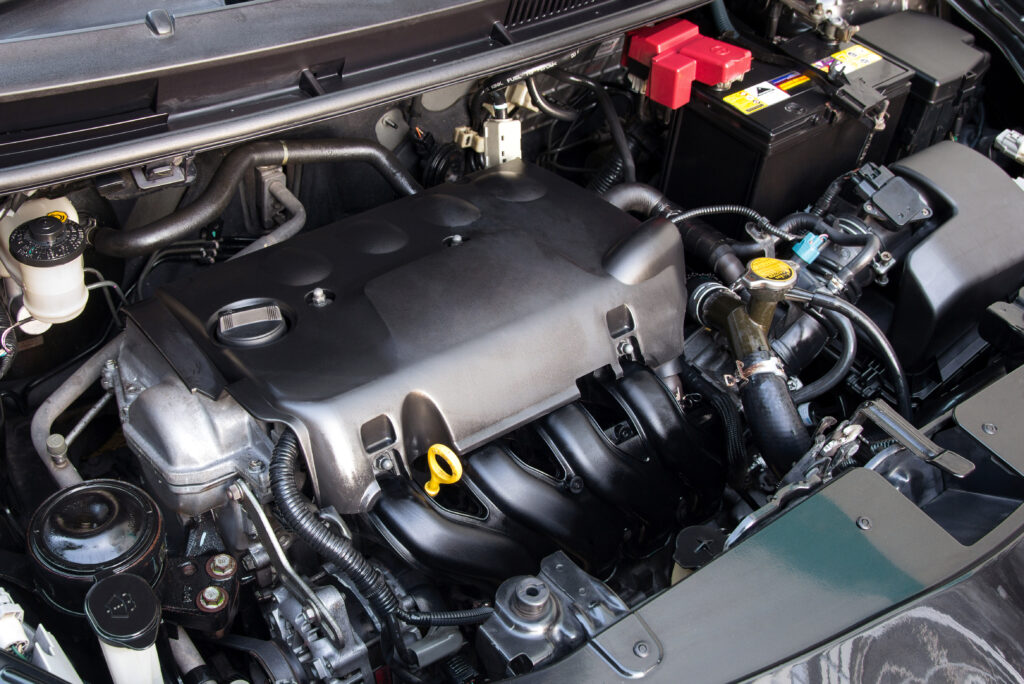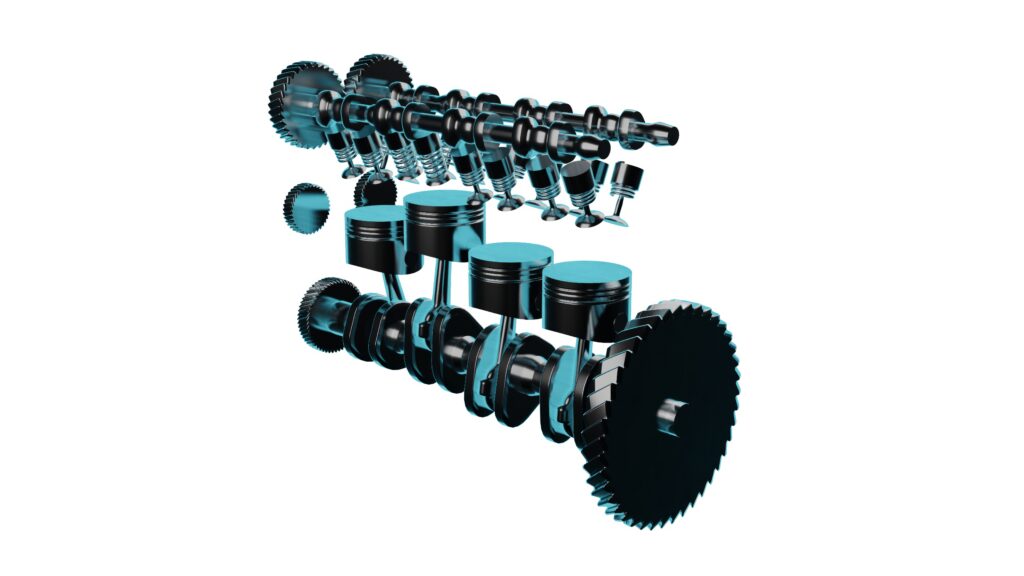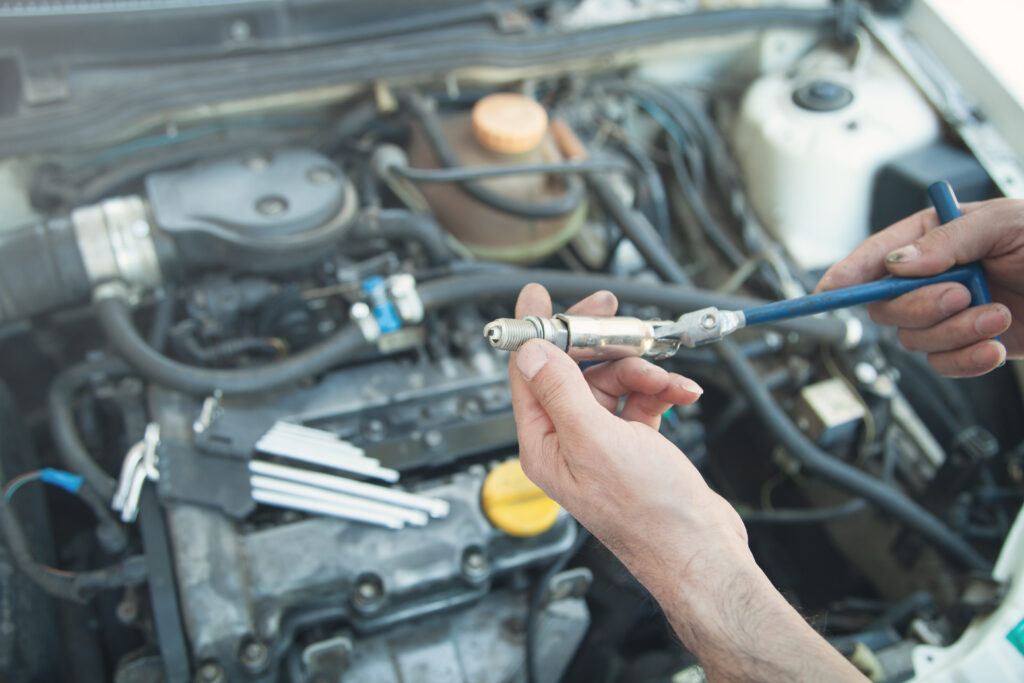What is SI engine
Analyze the key components and mechanisms of SI engines, providing insights into their operational efficiency and the innovations driving their development in the automotive industry.
SI engine (Spark ignition engine): A spark ignition engine refers to a petrol engine, meaning that the spark from the spark plug is used to ignite the mixture of compressed air and gasoline in the engine’s combustion chamber. This type of engine is called a spark ignition or petrol engine. In short, this engine is also referred to as an SI (S. I.) engine. Light fuel, called petrol, is used as fuel in this engine, and its flash point is 35° to 40° Fahrenheit. This engine operates following the Otto cycle. German scientist Nicholas Otto invented the Otto cycle and the petrol engine. The compression ratio of a petrol engine is 6:1 to 10:
How to work SI engine

Petrol engine with four-stroke cycle: Generally, engines with four or more cylinders operate on a four-stroke cycle. A petrol engine with a four-stroke cycle consists of one power stroke and three shorter strokes in each cylinder over two revolutions of the crankshaft or 720° of crank angle. To move the piston from TDC (Top Dead Center) to BDC (Bottom Dead Center), one stroke occurs each time the piston rises or falls, with each stroke covering 180° of crank angle. These four strokes are as follows:
- Suction stroke
- Compression stroke
- Power stroke
- Exhaust stroke
Suction Stroke: When the piston of a four-stroke cycle petrol engine moves down from TDC (Top Dead Center) to BDC (Bottom Dead Center) in the cylinder, the intake valve opens, and the exhaust valve remains closed. As a result, a mixture of air and petrol enters the engine cylinder through the intake port. This mixture is prepared in the carburetor and delivered into the cylinder. In a petrol engine, this mixture is called the active substance. At this point, the piston moves from TDC to BDC, and the mixture enters the cylinder due to the vacuum created by the increase in volume within the cylinder.
Compression Stroke: In this stroke, both the intake and exhaust valves of the engine are closed, and the piston moves from BDC (Bottom Dead Center) toward TDC (Top Dead Center). As a result, the volume within the cylinder decreases. This compresses the air-fuel mixture, causing it to attain higher temperature and pressure, accumulating in the combustion chamber of the cylinder. At this time, the pressure of this mixture increases to approximately 125 pounds per square inch, and at the end of the compression stroke, the heated mixture is ignited by the spark plug. This ignition generates more heat and pressure energy in the cylinder’s combustion chamber.
Power Stroke: At the beginning of this stroke, the pressure of the combusted air-fuel mixture in the cylinder’s combustion chamber rises to between 750 and 900 pounds per square inch, and the temperature increases to between 3000°F and 4000°F. Under this pressure, the piston is driven from TDC (Top Dead Center) to BDC (Bottom Dead Center) by the high-pressure and high-temperature gas. This is why it is called the power stroke. At this time, both the intake and exhaust valves remain closed. As the piston descends, it activates all the engine components, including the connecting rod, crankshaft, AC pump, and valves. The engine continues to operate as the combustion gases push the other pistons.
Exhaust Stroke: During this stroke, the piston moves from BDC (Bottom Dead Center) to TDC (Top Dead Center), with the exhaust valve of the cylinder open and the intake valve closed. As a result, the burnt gases are expelled through the exhaust port. Thus, the four strokes of the engine are completed. However, the intake valve opens just before the end of the exhaust stroke and the start of the intake stroke. This process is called “valve overlapping,” where both the exhaust and intake valves remain open for up to 60° after the piston reaches TDC during crankshaft rotation. Once the exhaust stroke is finished, the intake stroke begins again in the same cylinder, allowing the engine to continue its operation.
Working procedure of a Two-Stroke Petrol Engine:
A two-stroke petrol engine completes four functions—intake, compression, power generation, and exhaust—within two strokes (360° of crankshaft rotation). This type of engine typically does not use valves; instead, the intake and exhaust ports open and close periodically as the piston moves up and down. In a two-stroke petrol engine, the piston moves once up and once down, completing two strokes:
- Outward stroke
- Inward stroke
Outward Stroke: In this stroke, the piston rises from BDC (Bottom Dead Center) to TDC (Top Dead Center), during which two consecutive operations take place. As the piston moves upward, the intake port on the lower side wall of the crankcase opens first. As a result, the vacuum created in the crankcase allows the air-petrol mixture from the carburetor to enter the crankcase. At this time, compression and power generation occur in the upper side of the piston, or in the combustion chamber. However, at the start of engine operation, only the charge is taken downward. The initial outward stroke ends when the piston rises from BDC to TDC.
Inward Stroke: The inward stroke occurs when the piston moves from TDC (Top Dead Center) towards BDC (Bottom Dead Center) of the cylinder. This stroke is shown on the right side of figure 303. During this piston stroke, the mixture of air and fuel in the crankcase is pressurized and enters the combustion chamber through the passage adjacent to the cylinder. If combustion occurred during the power stroke, the exhaust gases would be released when the exhaust port of the engine opens as the piston descends to BDC.
In the subsequent outward stroke, combustion takes place by drawing in the air-fuel mixture at the bottom of the piston while compressing the previously introduced charge at the top, which is then ignited by a spark. In the following inward stroke, the piston is pushed by the combustion charge, expelling the exhaust gases. The previously pressurized charge in the crankcase forces the fresh charge above the piston to expel. Thus, in a two-stroke petrol engine, the engine operates by performing the four functions in two strokes.
The parts of SI engine

In case of light motor vehicle: motor cycle, baby taxi or Petrol engines are used as engines for scooters, cars, jeeps, etc.
In case of aircraft: Petrol engine is used as the sole engine of the aircraft.
In case of fast cars: Petrol engine is used as the only engine in driving a fast car (Racing Car)
Advantages:
The fuel used in them has a low flash point (F.P.), which results in rapid combustion.
Spark ignition engines are popularly used in motorcycles, scooters, cars, airplanes, etc.
This engine is used as a high-speed engine.
This engine is lightweight and easy to start and stop. Consequently, it is used in portable power generation units.
Disadvantages:
The cost of fuel used in this engine is high.
It cannot be used as a heavy vehicle engine.
This engine is used less in industrial plants and development works because, comparatively, its power is lower.
Summary, as some of the unburned charge in two-stroke petrol engine escapes with the combustion gases, carbon monoxide (CO) is produced. This gas irritates human eyes and pollutes the atmosphere. Because two-stroke petrol engines cause environmental damage, their use is disappearing day by day in the developed countries of the world.

